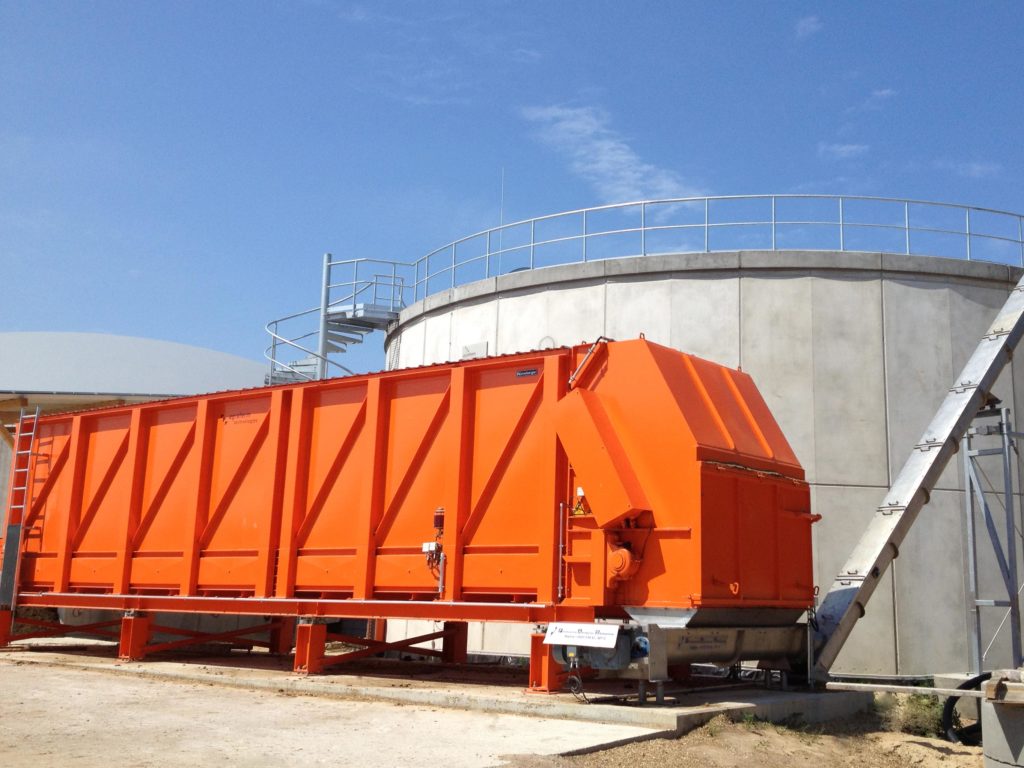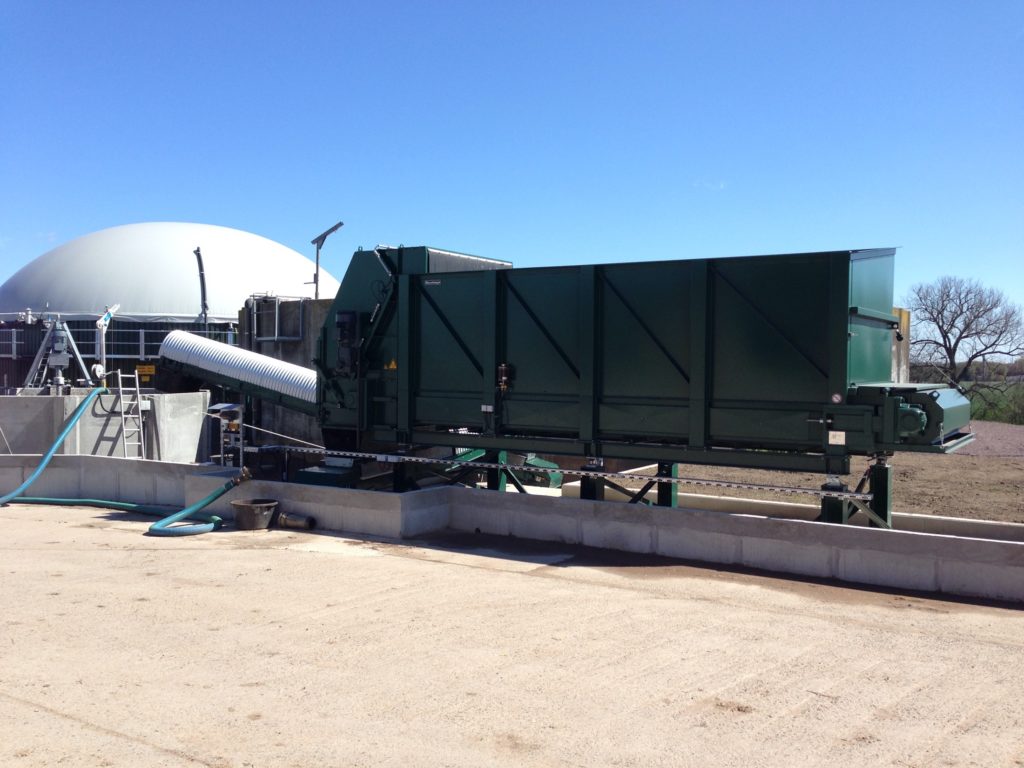Tried and tested technology, practically implemented
Receive, stockpile, disperse and dispense in a metered fashion
At Havelberger, we have been developing and producing receiving silos, temporary storage and metering technology for an enormous range of bulk solids since 1952.
Compost and soil, hog fuel, wood chips or pellets, all types of residues, substitute fuels, plastic and rubber granulates, biomass such as silage and feed, food waste, dried sludge and many other pourable and granulated products – the right concept, the right metering unit for every use case.

Input batch feeder for a wide range of bulk solids
The Havelberger input batch feeder is a large-volume scraper-chain conveyor with a milling device. The delivery principle has proven its worth over decades and is characterised in particular by its reliability and energy efficiency.
Biomass is prepared before refinement as the base substance for plastic, as a raw material for wood pellets or as an energy source for biomass cogeneration plants.
Sorting of material by type and size is required for the preparation of raw materials which are suitable for resale, e.g. for the fibreboard industry or for pellet manufacturing, from waste wood.
The input batch feeder has proven its worth in the filling of feeding systems for large livestock herds for many decades.
If waste is to be turned into valuable fuel, then usable waste is shredded, separated, sorted and even granulated or pressed into pellets where applicable.
Become part of our team
Our field of activity includes the development of input and metering technology for an enormous range of bulk solids, as well as special vehicle manufacturing. We carry out development and production for regional and international clients in the agriculture, environmental technology and energy technology divisions.
Repowering – replacement of machines with new, higher-performance machines
Repowering
Everything ages, is subject to wear and has to be replaced sometime. But this is also an opportunity to integrate new, more efficient systems into the plant concept in order to optimise it.


